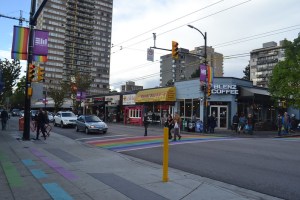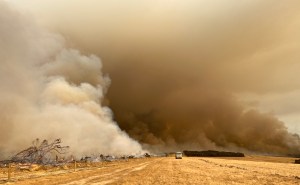Last October a unique photo made rounds in Singaporean Facebook circles, receiving a variety of reactions by those who shared and commented. A Jambu Fruit Dove laid lifeless on the pavement outside a Singaporean secondary school, dead after a collision with the school’s large reflective windows. The post garnered thousands of reactions, shares, and comments. Some mourned, some called on the Singaporean government to improve the safety of birds in the city, and others responded mockingly, that no one should be that concerned by a single dead bird.
While the issue of bird mortality may sound inconsequential to some, it is a growing issue in Singapore, an island nation which is home to many rare bird species and is a stopover point for more than 2,000 migratory birds per year. As a center of global avian biodiversity, Singapore hosts more than 400 bird species including more than 25 rare or threatened species. Singapore is also located on the East Asian-Australasian Flyway (EAAF), a route travelled by over 50 million migratory waterbirds from over 250 different populations, including more internationally recognized endangered species than any other flyway.
The city plays a unique role as a refuge for bird species which are hunted for pet bird trade in the region. The Straw-Headed Bulbul, a rare songbird now classified as a globally endangered species, previously populated most of Southeast Asia, but is now facing rapidly declining populations in Malaysia, Borneo, and Sumatra and has entirely disappeared from Java and Thailand. Singapore’s Ubin Island, conversely, has seen heavy Straw-Headed Bulbul permanent migration in recent years. The island is widely regarded as a ‘last refuge’ for the rare species. Singapore is essential for global avian biodiversity as both an integral migration passageway and a haven for locally-threatened birds.
The man-made threats to birds, both in Singapore and beyond, are often misunderstood and underestimated in their severity. In North America alone, an estimated one billion birds die each year due to collisions with windows. In Singapore specifically, an average of at least 13 birds have been involved in collisions with man-made structures each year since 1998, but it is likely that this number has grown exponentially in recent years as the city has continued to develop. The threat to birds in Singapore is two fold, with both migratory and resident avian populations affected.
Many migratory birds travel across the city on the previously-discussed East-Asian Australasian Flyway. The flyway includes more than 15 countries and spans from Alaska to Russia in the north down to Asia in the south, including eastern China, all of Southeast Asia, and Australia. Birds traveling through Singapore are most threatened by the downtown high rises, as well as the reflective low-rise buildings in the West of the island.
Singapore is much more urbanized than its surroundings. Minimally built-up areas of Malaysia border the city to the north, along with Indonesia’s largely-rural Sumatra to the west and open waters to the east. Birds flying along this route, thus, are often unprepared for the sudden flight obstacles posed by the large, reflective, and brightly lit building in Singapore’s Central Business District, as well as the reflective buildings lower-rise buildings in the Western areas of the city.
The threats to resident avian populations in Singapore are different in nature, but are equally as deadly. The primary habitat of Singapore’s resident birds are heavily forested areas such as parks, nature reserves, and catchments. As such, resident avian species are killed most often in collisions with reflective windows of buildings adjacent to these forested areas. The Jambu Fruit Dove mentioned earlier is only one example of these such mortalities, as the school involved in the crash borders the Pandan Nature Reserve.
The circumstances for birds on the island are certainly not optimal. However, while these descriptions seem to portray a broadly bleak outlook for biodiversity in Singapore, this is not exactly the case. Singapore has made a strong concerted effort over the last decade to make environmental protection and biodiversity conservation a priority.
Singapore’s environmental efforts began in 1992, when the first Singapore Green Plan (SGP) was introduced. Three years later, Singapore ratified the Convention on Biological Diversity. In 2009, Singapore’s National Parks Board launched the National Biodiversity Strategy and Action Plan (NBSAP), which calls for increased biodiversity conservation and awareness, as well as consideration of biodiversity issues in policy and decision making. These mandates have been implemented broadly. According to the Asian Green City Index, Singapore now has at least 3,300 hectares of park space, and biodiversity conservation efforts have been a key part of the city’s initiatives.
In contrast, many of Singapore’s neighbours are plagued by policies which devastate biodiversity and the environment. Indonesia’s wildlife, for example, has been tormented by illegal burning of rainforests, which devastates native flora and fauna. In 2015, nearly the entire country was in flames as palm oil producers engaged in illegal slash and burn tactics, clearing out protected rainforests in order to plant highly-profitable oil palm plants. While the Indonesian government does levy large fines for such environmental destruction– often amounting to millions or billions of dollars– many of these fines go unpaid for years on end.
Furthermore, two more of Singapore’s neighbours, Malaysia and the Philippines are considered “megadiverse countries.” This means they are two of the only 17 countries which are home to 70% of the world’s flora and fauna. Altogether, these “megadiverse” countries comprise less than 10% of the surface of the earth. Nonetheless, both countries are facing rapid environmental degradation. In Malaysia, many native species have disappeared, including the Sumatran rhino and the leatherback turtle, with many others are under threat of a similar fate. In the Philippines, loosely regulated logging has resulted in massive deforestation, with an average of 54,750 hectares of forest cover destroyed each year between 1990 and 2010.
It is important to note, in light of these comparisons, that Singapore has of course committed many environmental degradations of its own. During the initial development in the 1960s and 70s, significant deforestation and natural habitat destruction took place in order to accommodate heavy urbanization. Nonetheless, it has since turned its efforts towards restoring these habitats in the form of parks and nature reserves, and even has begun to create pathways between these habitats, enabling wildlife to transverse the city. In this regard, Singapore especially outperforms its neighbours in terms of environmental restoration and protection.
Despite Singapore’s stellar performance in comparison to its neighbours, the city still has a long way to go to bring its protection of endangered avian species up to par with the rest of the nation’s environmental policies. Thankfully, attention to this urgent issue is slowly growing. Researchers at the National University of Singapore and the Nature Society (Singapore) (NSS) have conducted significant research on bird collisions with the built environment, as well as on avian biodiversity and endangered species. The NSS’s Bird Group is also engaging regular Singaporeans in a civilian-driven survey of migratory bird collisions in Singapore in order to bolster the group’s policy advocacy. Some solutions have also been proposed, including the pasting of avian silhouettes on dangerously-reflective windows and the turning-off of lights in downtown high-rises at night. These proposals, however, are only the beginning of the large effort necessary to restore birds’ safe passage on the East Asian-Australasian Flyways and to bolster the city’s ability to act as a refuge for regionally-threatened species.






